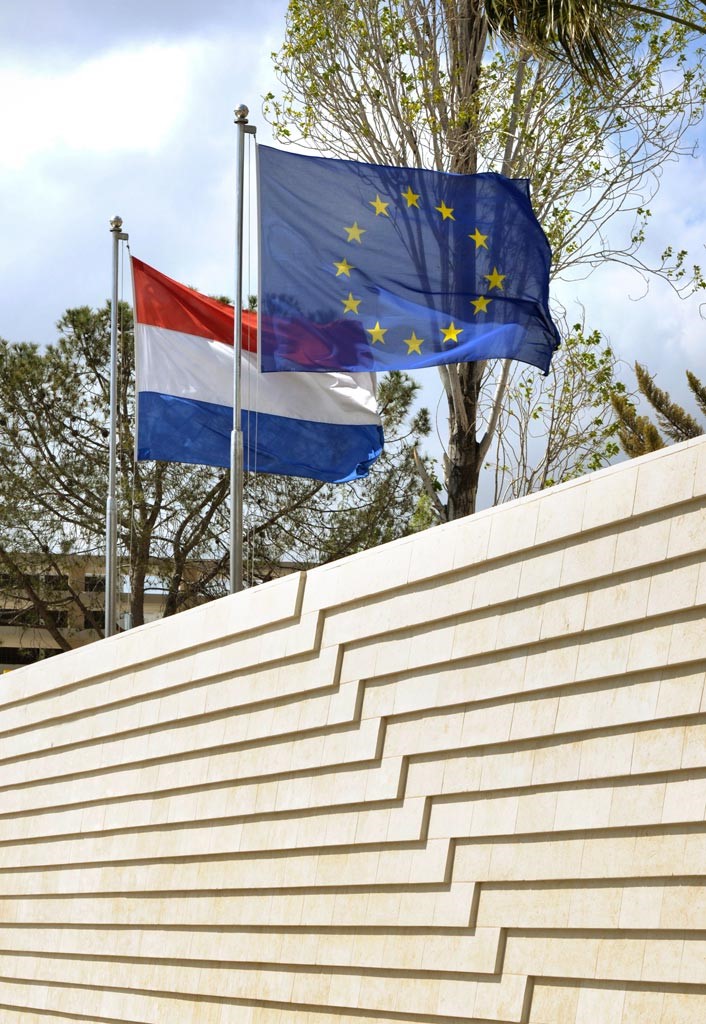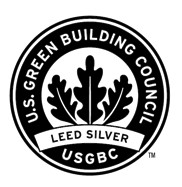The Netherlands Embassy in Amman is an adaptive reuse project that was the first in the country to be awarded with the prestigious LEED Green Building Certification. It is considered to be a pioneering example of an interdisciplinary approach to design and construction, a key component to environmental design and engineering.
Previously a stand-alone villa-type building, the embassy’s existing structure was redeveloped by CCG based on the sustainable concept design created by Dutch architect Rudy Uytenhaak.

It is considered to be one of the first green non-domestic buildings in Jordan and it is the first to achieve LEED Silver Certification. The project is used as a case study for green buildings in Jordan and its importance extends well into the public realm to educate and raise awareness of sustainable design for the built environment.
The Embassy of the Kingdom of the Netherlands achieved LEED certification for energy use, lighting, water and material use. By using less energy and water, these types of buildings reduce greenhouse gas emissions and contribute to a healthier environment.

The project involved the adaptive reuse of the existing villa structure with the addition of a number of sustainable design strategies, aimed at increasing energy and water efficiency, optimizing sustainable use of building materials and providing a comfortable indoor environment for occupants.
With a thorough understanding of building sustainability and energy efficiency, Rudy Uytenhaak created the architectural and interior design concept for the new embassy and CCG turned the extraordinary concept into a reality.

The building features a total area of 1,253m2 and its spatial program incorporates a number of elements that are important for the work of the Dutch Ministry of Foreign Affairs such as offices, meeting rooms, guest office spaces and storage facilities.
CCG’s involvement started with design review services, architectural and interior design development and construction drawings. This included providing rendering advice concerning local regulations. CCG also developed the landscape, MEP, irrigation system and storm water system designs as well as the structural engineering design for the rehabilitation and reinforcement of the existing building structure to suit its new intended use. CCG also supported with the applications for demolition and building permits, including follow up and coordination with authorities and provided supervision for the demolition and construction stages of the project.

The Netherlands Embassy in Amman became the first green building in Jordan to achieve LEED Silver Certification.
While working on this project, CCG prepared all required applications and documentation to achieve the LEED project certification under the OSGBC LEED for New Construction Version 2.2 standards.
This resulted in the project becoming the first green building in Jordan to successfully achieve LEED Silver Certification. This certification also included a rating of 5 out of 5 for design innovation.
About LEED
LEED (Leadership in Energy and Environmental Design) is the world’s leading green building project and performance management system. It provides a rating system and a framework for healthy, highly efficient and cost-effective green buildings of all types and all building phases, with the intention to encourage a healthier and more sustainable future. LEED certification is a globally recognized symbol of sustainability achievement and leadership. It prioritizes building efficiency, decreased operational costs, improved asset value, productivity, comfort, health and wellbeing for occupants.

The sustainable design includes a number of features that utilize elements of the existing building to minimize construction waste and consumption of raw materials, as well as additional features that have been introduced to suit the building’s new function and achieve environmentally-friendly and sustainable functionality.
Optimization of daylight
This is a key design strategy that is used across many building spaces. In the case of the Netherlands Embassy in Amman, this is achieved through the use of glazing at the front of the building and an atrium in the center. Solar shading is used to protect the offices from direct solar heat gain, so combined, these features reduce the requirement for artificial lighting and cooling.

A sustainable garden and irrigation system
The water efficient garden incorporates a range of sustainable landscape design features such as the preservation of existing trees and water efficient plants. A rainwater harvesting system has also been introduced for the irrigation of the garden and to minimize water demand.
Renewable energy sources
Onsite renewable energy is generated by photovoltaic panels. These are located in the garden to supply the building with a portion of its energy requirements for office lighting and other energy efficient devices. Solar thermal panels also provide hot water production.

A thermal storage tank
An existing swimming pool on site is now used as a thermal storage tank for the buildings HVAC (heating, ventilation and air conditioning) system, which also incorporates solar thermal collectors.
Sustainable materials and furniture
Another sustainable feature of the project is the use of environmentally friendly furniture for the offices and the use of local materials for the main building fabric to support local suppliers and reduce the environmental costs of transportation and production.

Recycling and occupant controllability
The implementation of recycling and occupant controllability of building systems help to allow for ongoing sustainable use of the building. Systems including lighting, temperature, humidity and air flow are all able to be controlled so that occupants can be comfortable and can also use the building in the most energy efficient way.
The project is not only the first building in Jordan to have received this recognition, but also the first Dutch embassy, and the second embassy building worldwide to have been LEED certified. The innovative project represents the Dutch Government’s commitment to sustainability and set a great example in the region.
CCG is pleased to have worked on a pioneering project of this kind, and especially one that was able to provide a successful example and case study for green building in the region and highlight such a varied range of sustainable methods.




